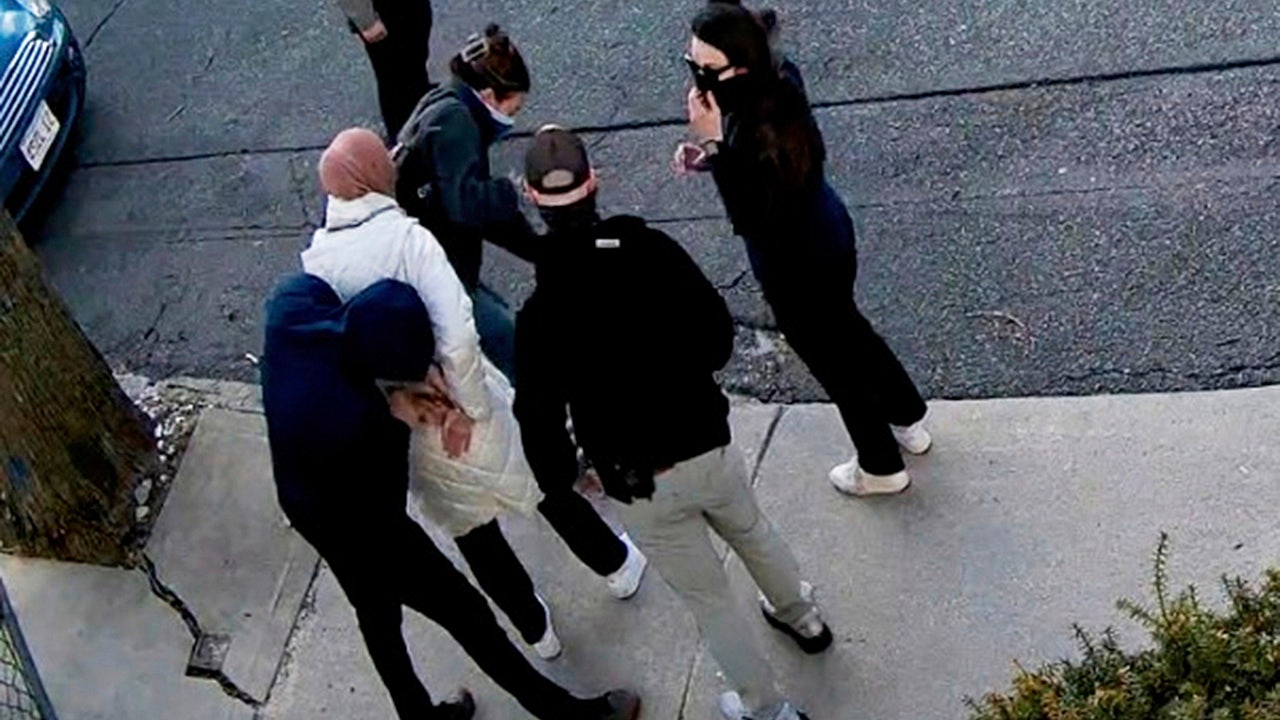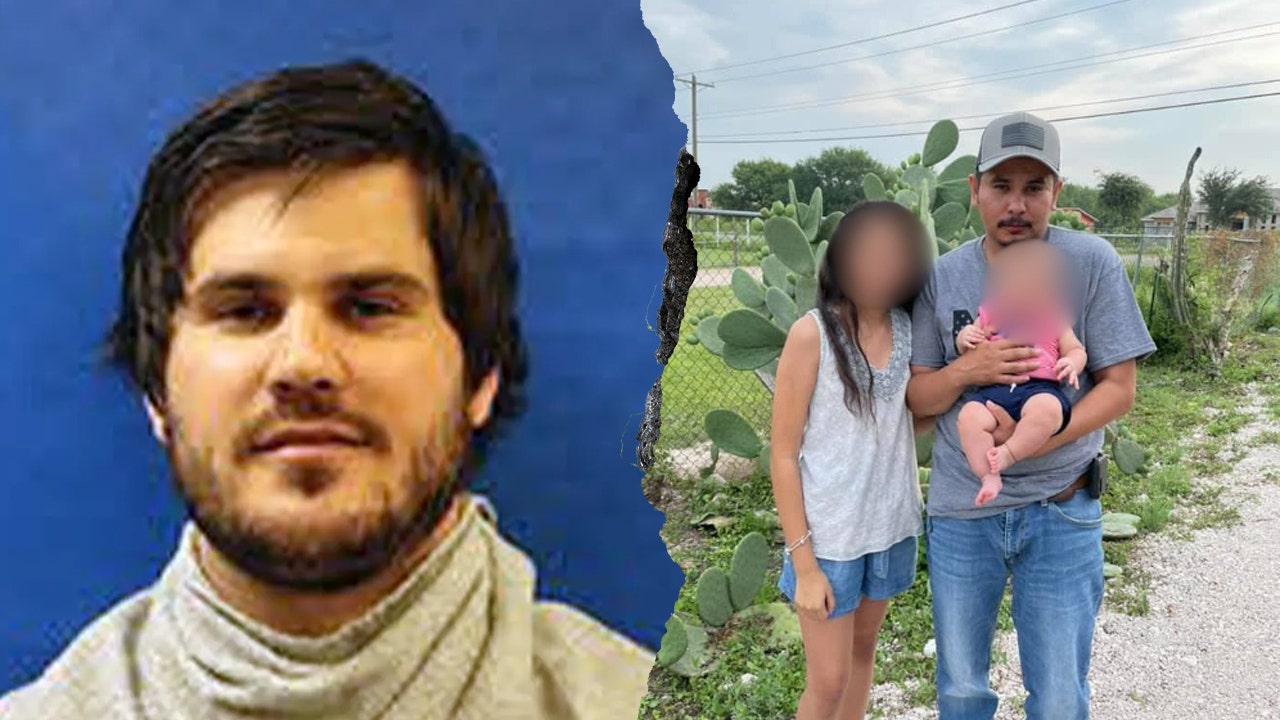A young Maryland woman is "relieved and recovering" after doctors performed a novel surgery to remove her potentially deadly cancerous tumors.
A surgical team at the University of Maryland Medical Center (UMMC) extracted the tumors, which had wrapped around the spinal cord, through the patient’s eye socket.
This was the first time surgeons removed a spinal tumor using a "transorbital" approach, according to a UMMC press release.
MICHAEL BOLTON HAD STRANGE SYMPTOMS BEFORE BRAIN CANCER DIAGNOSIS: ‘SOMETHING’S WRONG’
Karla Flores was just 19 when she was diagnosed with a chordoma, which is a developmental bone tumor, in her spine.
At 18, Flores started experiencing double vision, ultimately leading to her diagnosis months later.
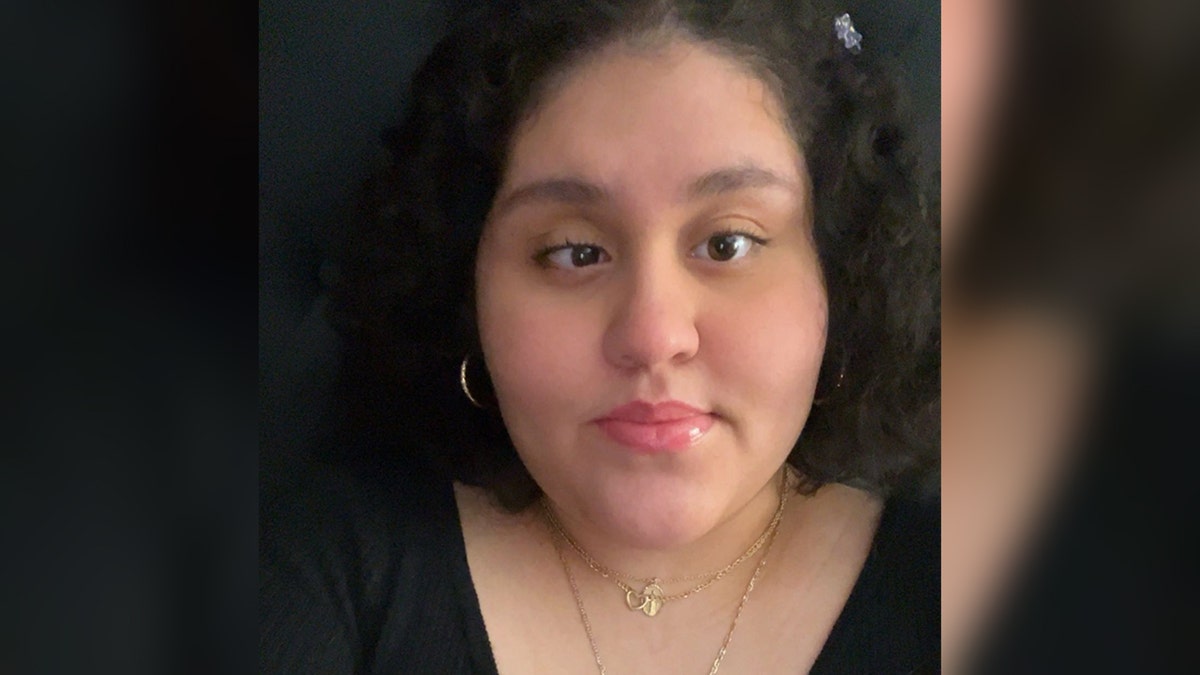
Karla Flores, taken in March 2025. Her face is absolutely scarless after all her surgeries. (Karla Flores)
Chordomas are very rare, with only about 300 cases occurring in the U.S. each year.
"The tumor was wrapped around the patient’s spine and spinal cord and had invaded the vertebrae in her neck, just below the base of the skull," according to Mohamed Labib, M.D., neurosurgeon at the University of Maryland Medical Center and assistant professor of neurosurgery at the University of Maryland School of Medicine.
TERMINAL COLON CANCER PATIENT SAVED BY BREAKTHROUGH TREATMENT
"The primary risks were injuring the brainstem, spinal cord or major blood vessels with the drill or the fine instruments we used — any of these injuries could have resulted in paralysis or even death," Labib told Fox News Digital.
"But without surgery, the chordoma could have continued to grow and put intense pressure on the spinal cord. This, too, would have paralyzed her arms and legs and eventually killed her. So, you can see how the stakes were very high with this procedure."
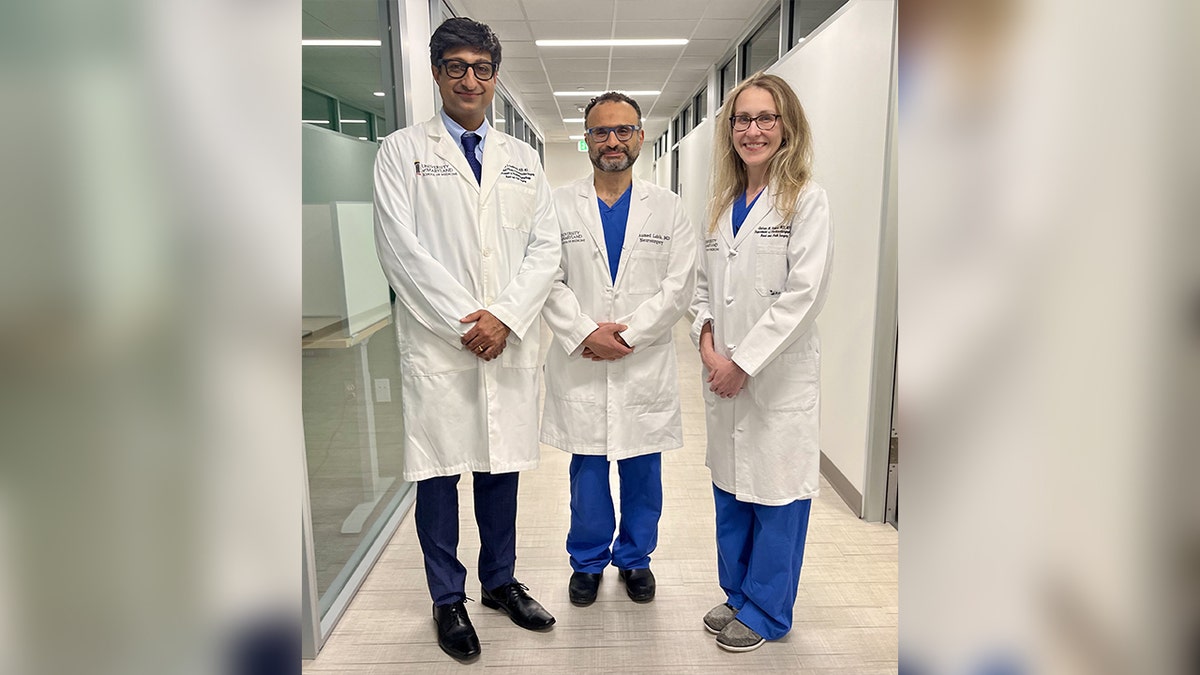
From left to right, Dr. Kalpesh Vakharia, Dr. Mohamed Labib and Dr. Andrea Hebert of the University of Maryland Medical Center. (University of Maryland Medical Center)
The surgeons created a "huge surgical corridor" through the eye socket that enabled them to get in front of the spinal cord.
"It was a straight shot," Labib said.
"By going through the bottom of the eye socket, we were able to remove a tumor that otherwise would have been very difficult and very risky to address."
"Learning about the spinal and brain tumors was terrifying, but I am so grateful the doctors were able to remove them."
During the procedure, Labib worked with a facial plastic and reconstructive surgeon, Kalpesh T. Vakharia, M.D., who "carefully cut through the conjunctiva, the transparent membrane protecting the eye, inside the lower eyelid without disturbing the eye."
To create the pathway to the spine, Vakharia removed the bottom of Flores’ eye socket and a portion of her cheekbone, the release stated.
"We wanted to develop a surgical plan where there would be no external scars and it would be impossible to tell that the patient even had surgery," said Vakharia.
After Labib removed the tumor, Vakharia rebuilt the bottom of the eye socket using a titanium plate and rebuilt the cheek with bone from the patient’s hip, the release detailed.

This is an illustration of the patient's two spinal tumors. (University of Maryland Medical Center)
"It was amazing to have had the opportunity to be part of surgery that had never been done before," Vakharia added.
This approach also prevented any damage to the eustachian tube, major blood vessels such as the jugular vein and internal carotid artery, and nerves that control swallowing and speech, Labib noted.
Prior to Flores’ surgery, Labib had the chance to practice the transorbital procedure on cadavers "many, many times."
CLICK HERE TO SIGN UP FOR OUR HEALTH NEWSLETTER
"The fact that people are willing to donate their bodies to science enabled us to do this and saved the life of this young woman," he said.
Flores also had a large tumor around her brain stem, which was removed through two separate procedures via her skull and nose, the release stated.
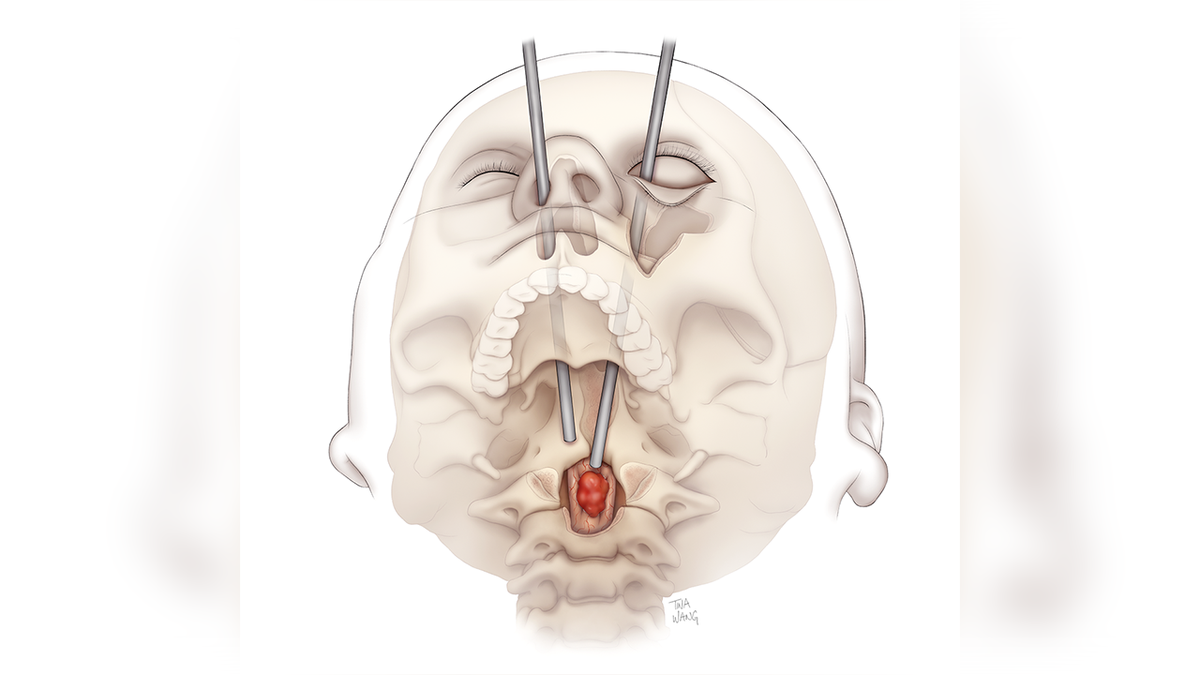
An illustration of the transorbital path to the patient's tumors. (Tina Wang/University of Maryland Medical Center)
The spinal tumors could have been life-threatening if they had grown to the point where they caused significant brain stem compression, according to Andrea M. Hebert, MD, a UMCC head and neck surgeon who performed the endonasal procedure and took part in the transorbital surgery.
"Many of these tumors recur, and that’s why we favor a multidisciplinary approach to treatment," said Hebert in the release.
Flores has also undergone radiation therapy to eliminate any remaining cancer cells.
CLICK HERE TO GET THE FOX NEWS APP
"Karla is doing really well — she’s recovered from surgery and radiation and is ready to get back to work and school," Labib shared with Fox News Digital.
"She’s an incredibly brave young woman who has faced more than most her age. I expect that same strength of spirit will carry her into a promising future."
"Learning about the spinal and brain tumors was terrifying, but I am so grateful the doctors were able to remove them."
Flores does have some nerve damage due to the tumor’s proximity to the brain stem, which has caused some issues with movement of her left eye.
"Learning about the spinal and brain tumors was terrifying, but I am so grateful the doctors were able to remove them," said Flores, who plans to go to school to become a manicurist.

Karla Flores is pictured on the left, plus the team of doctors that handled the procedure. (Karla Flores; University of Maryland Medical Center)
"I’m slowly recovering and with any problem I have, they help me," she continued.
"I keep reminding myself to take one day at a time and know that each step is an accomplishment."
WOMAN SAYS DOG DETECTED HER BREAST CANCER BEFORE DOCTORS DID: 'HE'S KNOWN THIS WHOLE TIME'
Flores now plans to go to school to become a manicurist.
Looking ahead, UMMC’s team plans to demonstrate the transorbital procedure this fall to neurosurgeons from around the world, at their annual Skull Base surgery course.
For more Health articles, visit www.foxnews.com/health
"When you have such a broadened corridor to reach these tumors, you can completely remove them, which greatly reduces recurrence of the cancer," Labib told Fox News Digital.
"We also have other patients who will be receiving similar surgeries in the near future."
Melissa Rudy is senior health editor and a member of the lifestyle team at Fox News Digital. Story tips can be sent to [email protected].

 8 hours ago
6
8 hours ago
6
